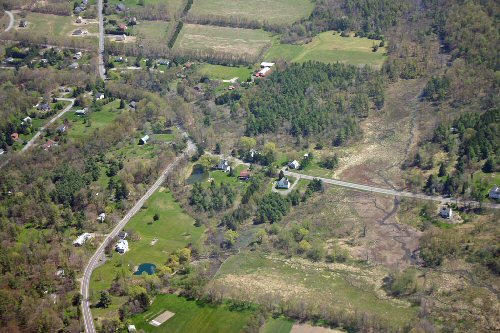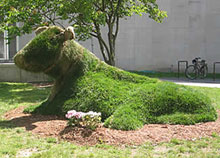Three shameless plugs this morning:
 Introduction to Botanical Illustration online course. (Full disclosure: I work with the instructor as part of my day job in the Department of Horticulture at Cornell University.) If you’ve ever wanted to become proficient at illustrating what you see in your garden, this 6-week online course will teach you the basics of rendering plants in pencil and ink.
Introduction to Botanical Illustration online course. (Full disclosure: I work with the instructor as part of my day job in the Department of Horticulture at Cornell University.) If you’ve ever wanted to become proficient at illustrating what you see in your garden, this 6-week online course will teach you the basics of rendering plants in pencil and ink.
The instructor, my friend and co-worker Marcia Eames Sheavly, is an accomplished artist who also teaches our popular Art of Horticulture course, recently featured by Julie over at The Human Flower Project.
The syllabus:
- Observation of Art in Nature
- The Use of Line in Drawing
- The Use of Shape and Space in Drawing
- Depicting Perspective and Foreshortening in Illustration
- Using Light to Add Dimension to Botanical Illustrations
- Composition and a Creative Approach to Drawing
There are still a few spots open. But act quickly: The course starts January 21.
 Vegetable Varieties for Gardeners website. (Full disclosure: I work on this website as part of my day job in the Department of Horticulture at Cornell University.) When you’re poring over veggie seed catalogs this winter, stop by this site where you’ll find descriptions and seed sources for more than 5,600 varieties.
Vegetable Varieties for Gardeners website. (Full disclosure: I work on this website as part of my day job in the Department of Horticulture at Cornell University.) When you’re poring over veggie seed catalogs this winter, stop by this site where you’ll find descriptions and seed sources for more than 5,600 varieties.
You can also read more than 3,400 ratings and reviews from fellow gardeners to help you find out which varieties perform best in your garden.
The site has really grown since we launched it in 2004. We’ve got a lot of ideas to develop the site even more. But what we really need now is more passionate vegetable gardeners contributing reviews of their favorite varieties — as well as those that didn’t work out so well in their setting. So if you know some passionate veggie gardeners, please pass this along to them.
 Seneca Hill Perennials. No full disclosure needed here. Well, the proprietor of this nursery, Ellen Hornig, is a member of our local Adirondack Chapter of the North American Rock Garden Society (I’m a board member and editor/webmaster for the group) and she’s as nice as she can be.
Seneca Hill Perennials. No full disclosure needed here. Well, the proprietor of this nursery, Ellen Hornig, is a member of our local Adirondack Chapter of the North American Rock Garden Society (I’m a board member and editor/webmaster for the group) and she’s as nice as she can be.
Why am I plugging Seneca Hills? This year is Ellen’s last print catalog. She’s all online from here on out. To echo a quote from her catalog that Graham over at Transatlantic Planstman noted:
Global warming forces us to examine our resource use, and this is one arena in which it can be cut. We will be redesigning the website somewhat to compensate for the lack of a catalog, including adding… an archive wherein inactive entries can be kept for reference purposes.
As I look at the foot-tall stack of catalogs on the corner of my desk — most of which will only get a quick flip-through — I know Ellen is right. Sure, there’s something about going to the mailbox and seeing that there are two or three new catalogs in there. But that is increasingly becoming a luxury we can’t afford.
Buying locally as much as possible can also help us reduce our collective carbon footprints. But in the case of plants, I also like supporting folks like Ellen who are good at identifying plants (exotic and native) that perform well where I live.
Sure, she has more reliable snow cover than I do. (I think I read recently that Oswego has averaged about 140 inches of mostly Lake Effect snow over the past decade or so.) But I know that I can find some great plants in her catalog that will do well here and that I won’t find anywhere else.
So, know any other hidden-gem nurseries that folks in your neck of the woods should know about? Plug them in the comments.







